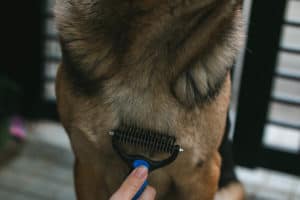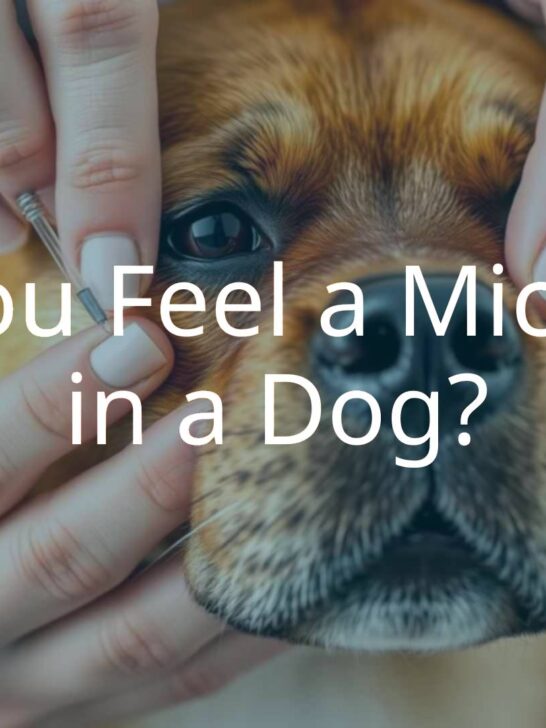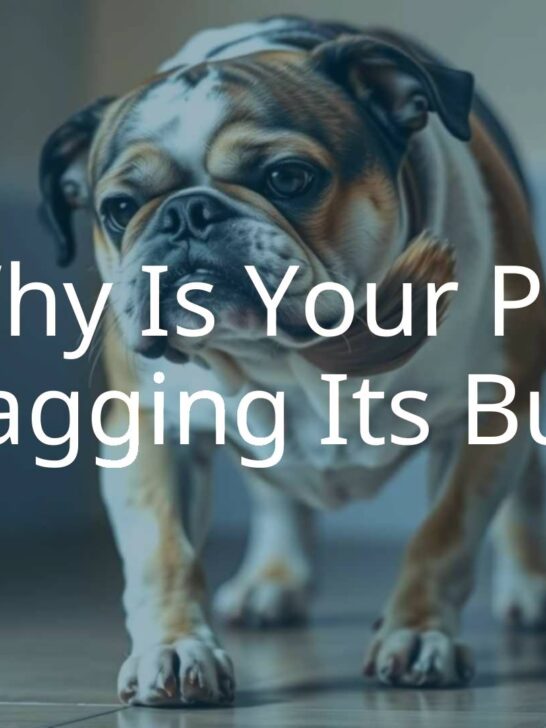What Are Tapeworms in Dogs?
Tapeworms are common intestinal parasites that infect many dogs. These flat, segmented worms (called cestodes) live in the intestines and feed on the dog’s nutrients. While most adult dogs may not get very sick from tapeworms, these parasites can be uncomfortable and may cause bigger problems in puppies. Tapeworms attach to the wall of the small intestine and absorb nutrients from the dog’s food.
The good news is tapeworms are easy to treat. Knowing how dogs become infected and how the tapeworm life cycle works can help stop and prevent these infestations.

Types of tapeworms in dogs
The most common tapeworm in dogs is Dipylidium caninum, also called the flea tapeworm or cucumber tapeworm. This kind is responsible for most tapeworm cases in dogs.
Other types exist. Dogs might pick up Taenia tapeworms by eating small animals like rodents or rabbits that carry the parasite. This is more likely in dogs that hunt. Less common but more dangerous for people is Echinococcus, which can come from eating infected rodents. Echinococcus usually doesn’t hurt dogs much but can be a serious risk to humans.
How do dogs get tapeworms?
Most tapeworm infections, especially those caused by Dipylidium caninum, start when a dog swallows a flea carrying tapeworm larvae. It goes like this: flea larvae eat tapeworm eggs in the environment. When the flea matures, the tapeworm egg matures inside it. If a dog eats this flea-by grooming itself or another pet-the tapeworm egg is released in the intestine, where it attaches and grows. Dogs can’t get tapeworms straight from the stool of an infected dog; the flea is needed for the cycle to work. For Taenia, the dog becomes infected by eating small prey like rodents or rabbits that have the tapeworm.
What are the symptoms of tapeworms in dogs?
Many dogs with tapeworms don&rsquot act sick, especially adults. Sometimes the infection is only noticed when you see something strange. Still, there are common signs to look for.
Tapeworm segments in poop or near the anus
The surest sign of tapeworms is seeing little white pieces in your dog’s feces or stuck to the fur around its anus. These are tapeworm segments (proglottids), which look like small rice grains or cucumber seeds. Sometimes they move, and sometimes they dry out and turn yellow. You might spot these where your dog sleeps. Keep in mind, you might not always see these pieces since they’re not shed all the time.
Scooting and itching
If your dog drags its behind across the ground (“scooting”), it could be itchy from tapeworm segments coming out of the anus. Scooting can also be caused by other issues like full anal glands, but it’s a common sign of tapeworms. Dogs might also lick or bite around their back end more than usual.
Digestive symptoms: appetite changes, diarrhea, vomiting
Tapeworms rarely cause serious digestion problems in adult dogs, but heavy infestations can lead to a decreased appetite, diarrhea, or-in rare cases-vomiting up a whole tapeworm. These symptoms are more common in puppies or severe infections.
Symptoms in puppies
Puppies are more at risk from tapeworms. Heavy infestations can slow their growth, cause anemia, or even block their intestines. Puppies have weaker immune systems and small bodies, so parasites can affect them more. Getting prompt treatment is important for young dogs.
How are tapeworms in dogs diagnosed?
Diagnosis usually starts when an owner spots signs of tapeworms at home, but a vet should always confirm it.
How vets check for tapeworms
Your vet will likely ask for a stool sample. They look at the stool under a microscope to find parasite eggs, using tests such as fecal flotation. Tapeworm eggs can be heavy and aren’t always shed, so these tests don’t always catch the infection. If you see tapeworm segments at home, let your vet know-sometimes spotting these is enough for a diagnosis.
What to watch for at home
Look for rice-like pieces in your dog’s fresh stool or stuck to its fur. You might also find dried pieces where your dog sleeps. Watch for scooting or licking around the tail. If you notice these signs, make a note of them and share them with your vet to help with diagnosis.
How to get rid of tapeworms in dogs
Getting rid of tapeworms in dogs is usually simple with the right treatment. The main approach is giving your dog special medication and cleaning up the environment to stop the worms from coming back.
Prescription tapeworm medication
The medicine most often used is praziquantel. Praziquantel kills tapeworms by breaking up their outer coating. After treatment, you usually won’t see dead tapeworms in your dog’s stool-they break down and are digested. Praziquantel is effective against both the flea tapeworm and Taenia tapeworms.
| Brand/Type | Form | Notes |
|---|---|---|
| Praziquantel | Injection or tablet | By vet; can be hidden in food |
| Credelio Quattro, Interceptor Plus, Iverhart Max | Pill/chew | Also protects against other worms and pests |
| Droncit, Drontal Plus | Tablet | Used for a range of worms |
You can give the medicine in a pill, chew, or shot (your vet helps you choose what works best for your pet).
Over-the-counter options
Some pharmacies offer dewormers with praziquantel without a prescription. Always check with a vet before using them, because incorrect doses can be risky or not work against all tapeworms. Never give dog medicines to cats-they could be toxic.
Are home remedies safe?
There are lots of ideas online about using things like pumpkin seeds or papaya to treat tapeworms, but there’s no proof these can fully get rid of tapeworms in dogs. The best treatment is still praziquantel plus flea control.
- Pumpkin seeds: Might help kill some worms but won’t remove tapeworms completely.
- Papaya seeds, cloves: Show some results in lab tests but not enough for dogs.
- Best solution: Always treat with vet-approved medication.
Waiting for home remedies to work can make things worse for your pet. Talk to your vet before trying anything new.
Treatment steps and time needed
Usually, one dose of the right medicine removes all tapeworms in a day or two. Dead worms aren’t visible because the dog digests them. Always give the medicine as directed by your vet.
When you should go to the vet
If you see signs like rice-like pieces in stool, scooting, or odd changes in digestion or appetite, make a vet appointment. Quick treatment helps your dog feel better and avoids any problems, especially for puppies. Your vet will also guide you in keeping your dog from getting sick again.
What should you do after your dog has had tapeworms?
After you treat tapeworms, it’s important to clean up the environment and take steps to stop another infection.
How to clean your house and yard
- Wash all pet bedding with hot water each week.
- Vacuum carpets, rugs, and furniture well. Mop hard floors.
- Use insecticides with insect growth regulators (IGRs) indoors if needed.
- Pick up your dog’s stools right away from the yard to keep tapeworm eggs and fleas away.
- Treat your yard with pet-safe flea control products if fleas are a problem.
If one pet has tapeworms, treat all pets in the house with flea preventatives. Pets without symptoms can still spread fleas and tapeworms.
Watching out for a new infection
Tapeworms can come back quickly if fleas are still around or your dog keeps eating infected prey. Keep an eye out for symptoms, and bring your dog for regular fecal checks at the vet. Consistent flea control is the best way to keep tapeworms from returning.
How to prevent tapeworms in dogs
Stopping tapeworms before they start is easier and better for your dog’s health.
Flea control is most important
Fleas are the main cause of tapeworms. Use flea preventatives on all pets in your home all year. Options include drops, pills, and collars. Here are some choices:
- Advantage II: Topical flea medication
- Seresto: Flea and tick collar
- Nexgard, Simparica, Bravecto, Comfortis: Oral medications (ask your vet)
Use flea protection as scheduled. Some products last 1 month and others up to 3. If you live in an area where fleas are always a problem, use flea control even in winter. Some old products may not work anymore due to resistance, so talk to your vet about the best choice for your area.
Safe eating and environment tips
- Keep dogs on leashes when outdoors to prevent them from eating dead animals or hunting rodents.
- Fix fences to keep wildlife out of your yard.
- Don’t feed your dog raw organ meat, which can carry certain tapeworms.
Regular deworming
If your dog has a high risk of catching worms (like hunting or living where fleas are common), your vet might want them on regular deworming medicine. Many monthly pills for worms and heartworms also kill tapeworms. Ask your vet which products offer this protection. Regular deworming is part of a full plan to keep your dog free from parasites.
Can dogs give tapeworms to people?
People often worry about getting tapeworms from their dog. While it’s not very common, some types can be a risk.
Can tapeworms move from dogs to humans?
The usual tapeworm in dogs, Dipylidium caninum, is not passed directly from dogs to humans. The only way a person could get infected is by accidentally swallowing a flea carrying the tapeworm larvae, which is unlikely but can happen-especially for children who play on the floor or put things in their mouth. Keeping up with flea control is the best way to lower this risk.
Some rare tapeworms, like Echinococcus, are more serious for people. If a person touches dog poop or soil with these eggs and then eats them by accident (for example, without washing their hands), they could become sick. That’s why it’s important to:
- Wash hands after handling pets or their waste
- Keep up with regular flea control
- Have pets treated quickly if you see signs of worms
- Clean up after your dog, especially outdoors
- Teach kids to wash their hands after playing
While humans don’t often get Echinococcus, good hygiene and flea prevention lower the risk a lot for everyone in the home.























